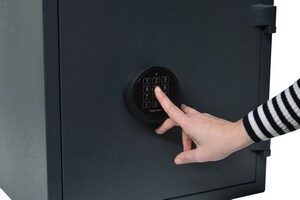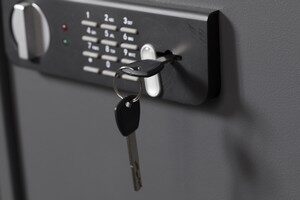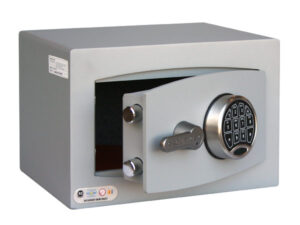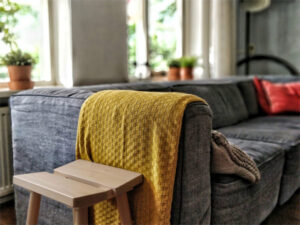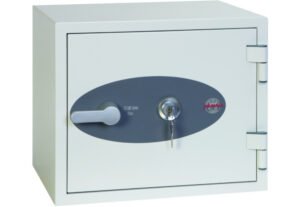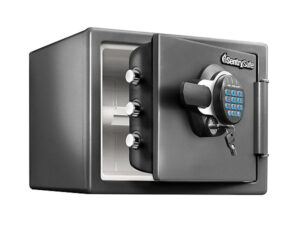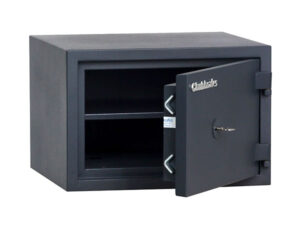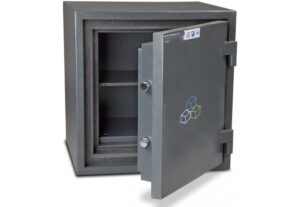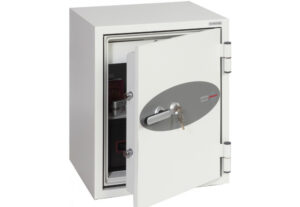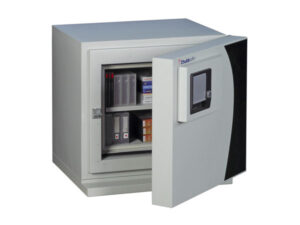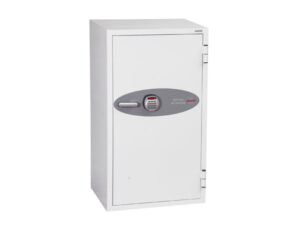What kind of safe do u own?
- Safe with electronic code lock
- Safe with electronic code lock and emergency key
- Safe with a key lock
- Safe with fingerprint lock
- Safe with 2 locks (double locks)
1. Your safe is equipped with an electronic code lock
Many 'problems' of a code lock are caused by a user error or a power problem (battery).
- Take the manual with you, ensure yourself of the correct code and check whether you are performing the correct actions.
- If you have entered the correct code, the safe door must be opened within a few seconds. Per type of safe you may need to operate a lever first. Do not wait too long or the lock will close and you will not be able to open the safe.
- Have you entered your code several times in a row, but your safe does not open? The lock may be blocked, wait at least 1/2 hour before trying again.
- Does the lock respond normally, is your code accepted, but your safe does not open? Replace the batteries with new Duracell (or other A-brand) batteries. The batteries may be too weak to release the lock (despite the correct code!).
- Try a different user code if it is set.
- Still unable to open your safe? Make a movie with your smartphone and send it to: [email protected]. We may be able to help you quickly with an extra photo and a short cover letter.
- Does nothing help anymore and you want to have your safe opened by a specialist?
How long does a battery last?
- All electronic locks automatically enter a power save mode when not in use.
- With an A-brand battery in an electronic code lock, approximately 1500-2500 openings must be possible.
- If you open the safe 3x a day, it must last more than 1 year.
- If you open the safe intensively 25 times a day, you must replace the battery (s) after approximately 3 months.
- Performance is highly dependent on brand and type of battery, conditions, temperature and environment.
- Always use A-brand batteries and never rechargeable batteries.
- Replace batteries preventively after 2 years if you open the safe little.
2. Your safe is equipped with an electronic code lock with emergency key
These types of safes are usually cheap private safes and the problem arises when the batteries are weak or empty and the emergency key can no longer be found. In that case, there is no other option than to have it opened by a specialist or to break it open yourself.
Tip! Always keep the emergency key outside your safe, in a safe place and remember this place!
Reorder emergency key
Despite the fact that all kinds of numbers can be found on such cheap safes, it is not possible to re-order an emergency key. The numbers refer to production series and are not linked to slot numbers, unfortunately.
3. Your safe is equipped with a key lock
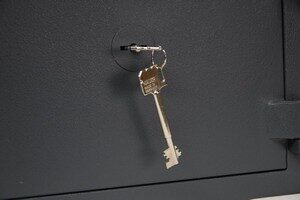 In general, there are very rarely problems with key locks.
In general, there are very rarely problems with key locks.
In the unlikely event that it is difficult or impossible for you to open your safe, one of the key's beards may be worn or damaged. The key is difficult to lock or is difficult to turn. Do not force and keep your safe open if possible. Please contact us to for more help if you are still unable to access your safe.
Are you unable to open your safe with the key? There may be a mechanical problem and a service visit is necessary.
4. Your safe is equipped with a fingerprint lock (fingerprint)
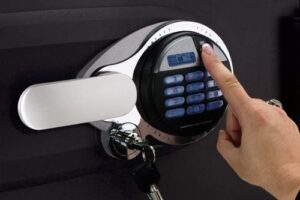 Locks operated with a fingerprint are sporadic. The technique is interesting but is still susceptible to malfunction under the influence of temperature and humidity.
Locks operated with a fingerprint are sporadic. The technique is interesting but is still susceptible to malfunction under the influence of temperature and humidity.
In addition, only a few such locks are European certified.
For most of these lock variants, there is also a possibility to open with a code. This can then serve as a backup. Then follow the steps described above to open your safe.
Cheap private safes with fingerprint lock are equipped with an emergency key. You can open the safe with the emergency key, provided you have it available and of course not in the safe.
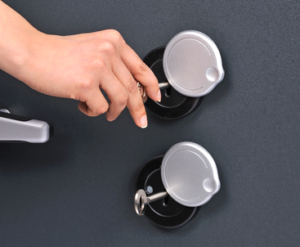 5. Your safe is equipped with 2 locks (double locks)
5. Your safe is equipped with 2 locks (double locks)
If your safe has 2 locks, this is a combination of the above locks.
Most common are 2 key locks or 1 electronic code- 1 key lock.
See the steps above to open.
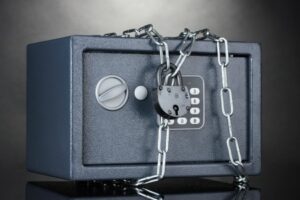 Which safe lock do I choose?
Which safe lock do I choose?
Would you like to know more about safe locks and which type is most suitable for you? Go to our blog article Which type of safe lock? for more background information, incl. pros and cons after all.

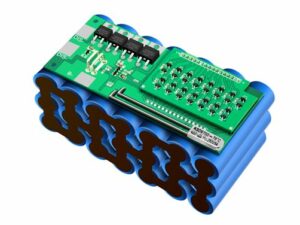

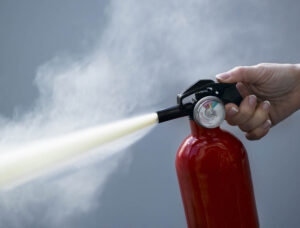 If a small lithium ion battery such as a smartphone or power bank is on fire, you can try to extinguish it yourself. Make sure that you do not inhale any hazardous substances and think about your own safety. At the time of writing this article, the fire service is still busy researching the best extinguishing method for lithium batteries. Lithium battery extinguishing agents that are most effective now are the following.
If a small lithium ion battery such as a smartphone or power bank is on fire, you can try to extinguish it yourself. Make sure that you do not inhale any hazardous substances and think about your own safety. At the time of writing this article, the fire service is still busy researching the best extinguishing method for lithium batteries. Lithium battery extinguishing agents that are most effective now are the following.


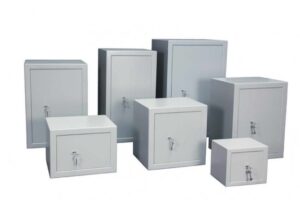
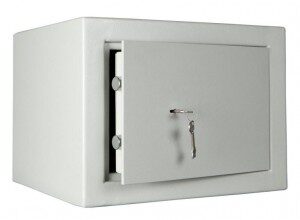

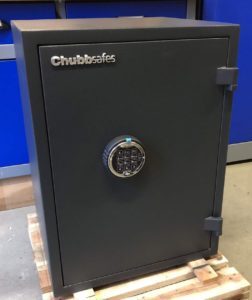 The Homesafe series is the latest range of
The Homesafe series is the latest range of 
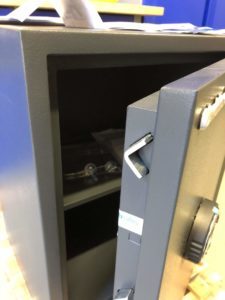
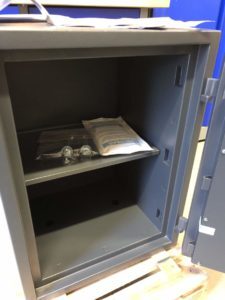
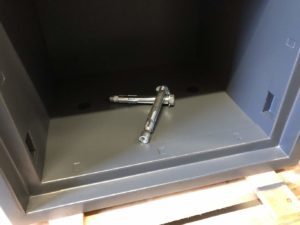
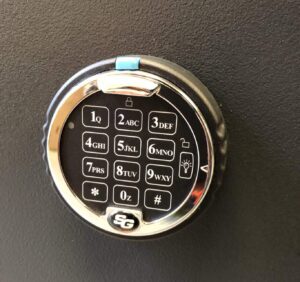 Ease of use : What is striking is the lack of a door handle. This function has been adopted in the lock, which is equipped with a black rotating ring. After entering the factory code, we were able to open the lock and then the safe. The keystrokes feel good and give feedback by means of a beep and red LED. You will be warned in time if the battery is weak. Changing is easy because the battery is in the keyboard. A battery is included as standard. Nice feature is the lighting; in the dark you press the light and the keyboard is illuminated.
Ease of use : What is striking is the lack of a door handle. This function has been adopted in the lock, which is equipped with a black rotating ring. After entering the factory code, we were able to open the lock and then the safe. The keystrokes feel good and give feedback by means of a beep and red LED. You will be warned in time if the battery is weak. Changing is easy because the battery is in the keyboard. A battery is included as standard. Nice feature is the lighting; in the dark you press the light and the keyboard is illuminated.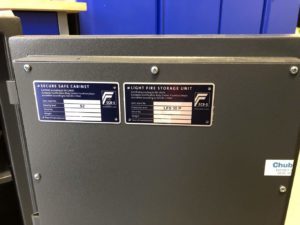
 Lips Safes and Chubbsafes
Lips Safes and Chubbsafes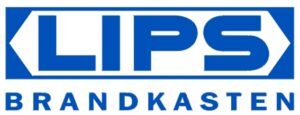

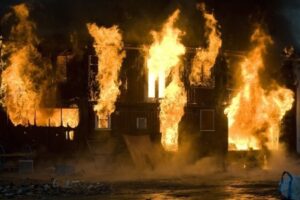
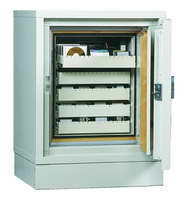 It is important to consider what you want to protect against fire and what risk you run or don't want to run.
It is important to consider what you want to protect against fire and what risk you run or don't want to run.
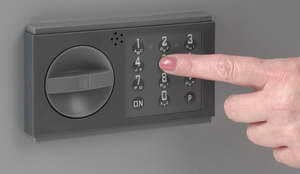 A wide variety of locks are available for safes. You can choose from key locks, mechanical combination locks, electronic code locks or biometric locks. There are also time locks and safes can be equipped with double locks so that 2 people are needed to open the safe. The various lock options have advantages and disadvantages.
A wide variety of locks are available for safes. You can choose from key locks, mechanical combination locks, electronic code locks or biometric locks. There are also time locks and safes can be equipped with double locks so that 2 people are needed to open the safe. The various lock options have advantages and disadvantages.
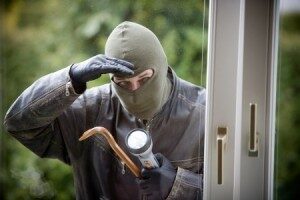
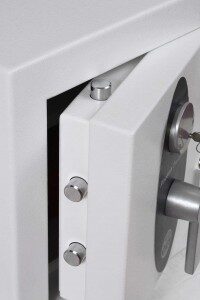 The value storage, also known as insured value, is a measure for distinguishing the burglary-resistance of different safes. It also applies if you want to have the contents of the safe insured. The higher the value storage, the higher the resistance to breaking open, and thus the better the safe. If you want to insure the contents of your safe, it is advisable to contact your insurance company and be informed of the requirements and conditions that your insurer provides for cover.
The value storage, also known as insured value, is a measure for distinguishing the burglary-resistance of different safes. It also applies if you want to have the contents of the safe insured. The higher the value storage, the higher the resistance to breaking open, and thus the better the safe. If you want to insure the contents of your safe, it is advisable to contact your insurance company and be informed of the requirements and conditions that your insurer provides for cover.
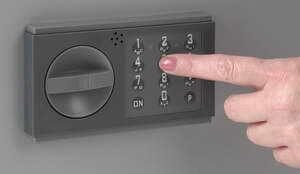
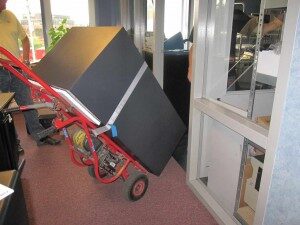 A safe can be installed in several ways. Safes can be placed freestanding, while they can also be attached to floors, walls, or inside a cupboard, under a bed, etc. There are also floor safes, specially designed to be mounted below ground level. All safes up to 1000 kg must be properly anchored. If you want to have a safe installed, go to
A safe can be installed in several ways. Safes can be placed freestanding, while they can also be attached to floors, walls, or inside a cupboard, under a bed, etc. There are also floor safes, specially designed to be mounted below ground level. All safes up to 1000 kg must be properly anchored. If you want to have a safe installed, go to 
